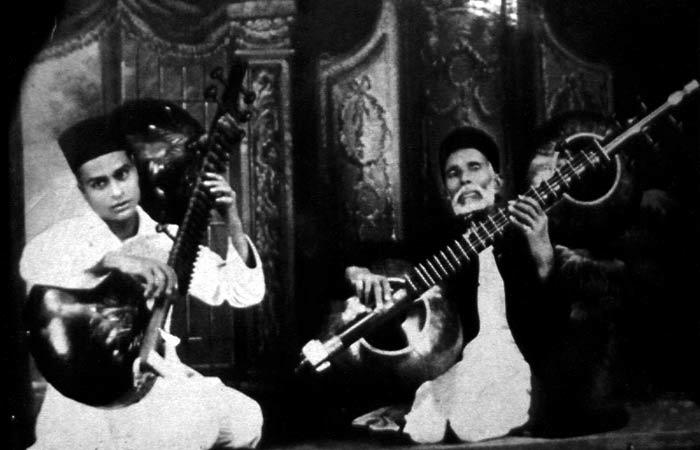Jawari and the Rudra Vina
Jawari
One of the most amazing groups of instruments is the Flat Bridge lutes of Northern India. The flat bridge enhances the overtones in the sound quality and produces a rich, full sound characteristic of the Indian lutes. Jawari comes from the word Jiwa which literally means soul. In Indian music, jawari is used when describing the quality of a tone, not its musical interpretation, but more in a sense of its acoustic quality. For example, some strings have a harsh, shrill, twangy sound and others dull and dead. Jawari is the process by which the instrument maker or repairer can shape the bridge to produce the correct and required sound, not too shrill or too dull, but according to the musicians' personal taste and the instruments' requirements. More and detailed information about jawari can be read via this Jawari link
There are a variety of lutes that have made use of the jawari and the most important of those are the following:
Been or Rudra Vina
In the Sangitratnakara from the 13th century, the tritantri-vina, later to become the jantar, looked remarkably like the been, a stick-zither with two gourds. The been was a larger version of the jantar and was introduced in the time of Akbar. The been had fewer strings and was suited to the medieval classical style of Dhrupad. Musically, this large and sturdy instrument is very suited to be played in very low octaves. It has an enormous resonance and therefore has no need to have the accompanying resonation strings. An absolute forerunner, the techniques and style of the been are still being used to this day on instruments such as the sitar and surbahar. Nowadays, the instrument is called the Rudra-vina, and is represented in two main styles. The style of the late Ustad Asad Ali Khan, has a light instrument that is played in a kneeling position with the instrument hanging on one shoulder. Representative of the Dagarbani style, and being the doyen of this instrument, was the great late Ustad Zia Mohiuddin Dagar. He made many modifications to the instrument, making it stronger and consequently heavier, therefore, needing to modify the sitting position.
As far as jawari is concerned, the Rudra-vina was the first of the flat-bridge lutes and is undoubtedly the most difficult to maintain, and frankly speaking, this should be done by the musician himself.
The Rudra-vina is one of the instruments that is still played by only a handful of musicians and is facing near extinction. With the rise in popularity of the sitar, unfortunately, the tradition was almost gone by the beginning of the 20th century.

